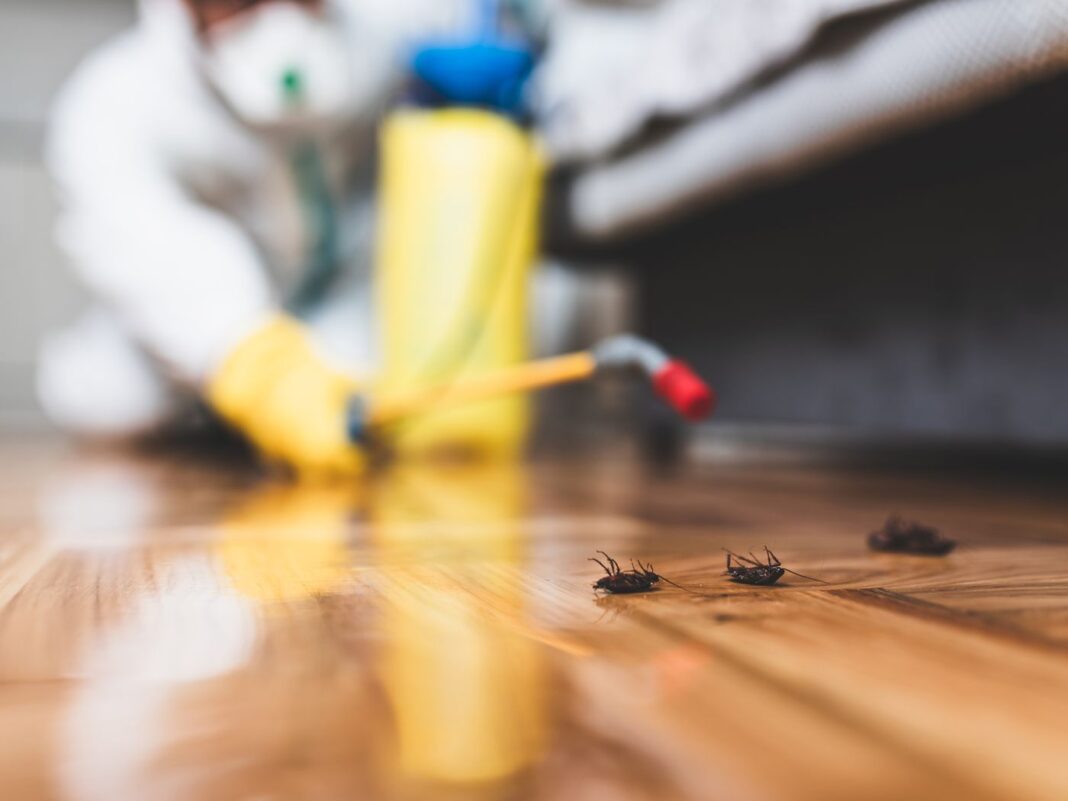In terms of maintaining a pleasant and safe living environment, grasping the life cycle of common pests is crucial. These undesired guests can invade your home at any point of the year, every season bringing its distinct set of difficulties and threats. Being mindful of how pests multiply, prosper, and seek shelter can aid you take preventive measures to ensure your home pest-free year-round. This knowledge is the foundation of effective pest control and will empower you to tackle infestations before they intensify.
In this definitive guide, we will explore various aspects of pest control, from identifying common household pests to understanding why DIY methods often underperform. With insights on seasonal pest activity, professional pest control planning, and unmasking prevalent myths, you’ll be equipped with practical tips to safeguard your home. Whether you face a seasonal resurgence of ants or the winter encroachment of rodents, we will supply you with the strategies you ought to employ to prevent and manage these nuisances effectively. Let’s investigate the nuances of pest life cycles and learn how to shield our homes against these relentless invaders.
Typical Home Pests and Control
Common home infestations include ants, roaches, rodents, and bloodsuckers. Sugar ants often enter homes in search of nourishment, while roaches thrive in hot, moist areas. Mice and rats, such as smaller rodents and rats, seek escapes, especially in colder months, and bloodsuckers feed on individuals' blood, making them a pest in bedrooms. Understanding their behaviors and homes is vital for successful prevention and management.
Preventing these pests starts with maintaining hygiene. Ensure that edibles is maintained in closed containers and that crumbs are immediately cleaned. Closing infiltration spots, such as fissures in siding and spaces around frames, can also help prevent infestations out. Additionally, routine checks of your home can help identify possible issues before they become infestations.
Seasonal variations changes can alter infestation activity, so it's crucial to modify your management strategies as needed. Spring and the summer months often bring an surge in ants and mosquitoes, while autumn may see rodents seeking harbor indoors. By being https://ozonepestcontrol.com/ and on the offensive in pest management, you can greatly reduce the possibility of infestations and maintain a pest-free home year-round.
Do-It-Yourself Pest Control vs. Expert Assistance
Many homeowners regard Do-It-Yourself pest management as an first approach to dealing with pests in their homes. The allure of reducing money and addressing problems on one's own terms can be enticing. However, the success of DIY methods often varies, with several solutions based on quick fixes rather than sustainable prevention. Homeowners may find that while they can control small infestations, larger issues, like bed bug infestations or rodent problems, typically require a broader approach.
Expert pest control services bring specialized skills and tools that most DIY efforts fail to provide. Trained technicians can accurately recognize pest species, check for potential entry points, and comprehend the life cycles of typical pests, ensuring a specific strategy. Moreover, professionals commonly have access to cutting-edge treatment options, including environmentally friendly solutions, that can be better and safer in the long run. Routine scheduling with a pest control service can help preserve a pest-free environment year-round.
Deciding between Do-It-Yourself pest management and hiring professionals often depends on the extent of the problem and the homeowner's comfort level with pest management. For minor issues, DIY strategies can be acceptable. However, if pests remain or if the infestation is large, investing in professional services can save effort, money, and stress in the long run. It is essential to consider the pros and cons to decide the most effective option for your unique situation.

Seasonal Pest Management Advice
As the times of year change, so do the kinds of infestations that may enter your home. In spring, be aware for ant infestations, termites, and mosquito issues emerging as temperatures rise. To prevent infestations, keep your garden tidy, eliminate standing water, and seal any cracks in your home's exterior. Regular inspections during this period can help you tackle any signs of early pest activity before they become bigger issues.
During the summer, pests like flies, bees, and wasp infestations become more prominent, often attracted to food sources and outdoor events. To keep these pests at bay, ensure that your food is stored safely and garbage is disposed of properly. Consider placing traps or using eco-friendly deterrents around your outdoor space to create a pest-free setting for outdoor activities.
As fall approaches, mice and other pests seek shelter as temperatures drop. Implement protective measures by closing entry points and ensuring that your residence is less attractive to intruders. Regularly check for any signs of pest activity and consider arranging expert pest control to handle any possible issues. Winter may bring its own set of difficulties with pests like roach problems seeking shelter, highlighting the need of year-round pest prevention strategies.
